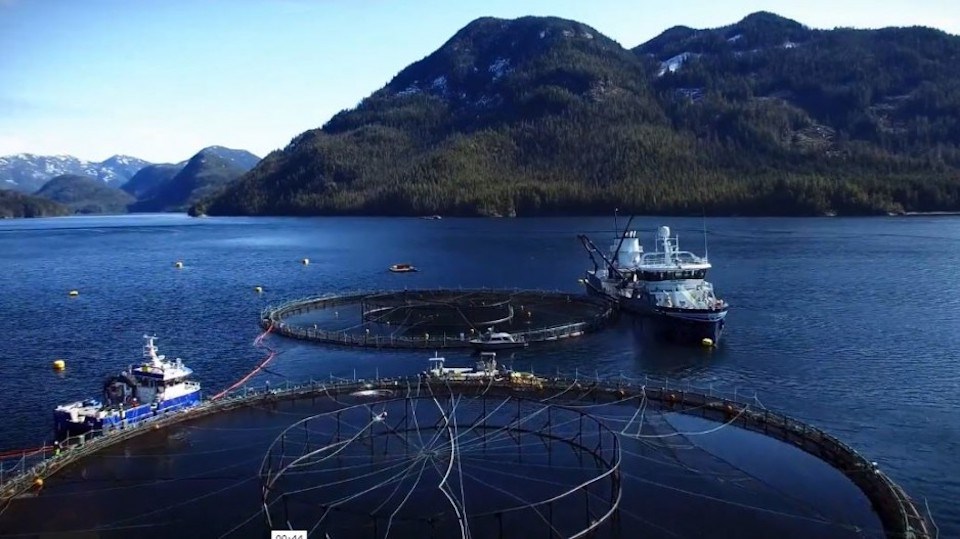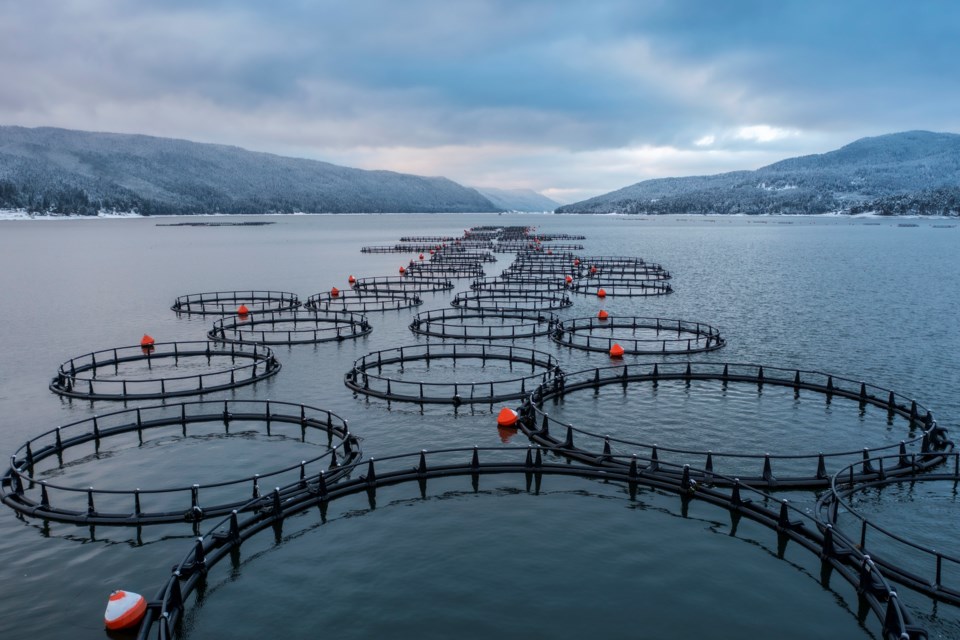Mass die-offs of farmed salmon are increasing around the world, with Canada experiencing some of the biggest and most frequent mortality events, new research has found.
The study, published last week by researchers from the University of Victoria, Texas A&M University and Memorial University of Newfoundland and Labrador, used public data to track the deaths of 865 million fish between 2012 and 2022.
Gerald Singh, a researcher in UVic’s School of Environmental Studies and the study’s lead author, said they filtered the data to find the largest 10 per cent of mass die-offs. Those mass mortality events turned out to range between 150,000 to almost four million dead fish, and often came about through some combination of poor management, an outbreak of disease or when sea temperatures climb amid a changing climate.
When they plotted the die-offs across the decade timeline, the researchers came to a startling conclusion: the frequency and magnitude of high-mortality events are increasing across Canada, Norway and the United Kingdom, which together with Chile, account for 90 per cent of global farmed salmon production.
As Singh put it: “The worst of the worst cases are getting larger.”

The researchers' global data set also included records of mass mortality in farmed salmon across Australia, New Zealand and Chile.
The largest mass die-off the researchers identified in Canada was found at a Grieg Seafood operation off British Columbia’s Sunshine Coast, where 3.8 million fish died within a one-month period. In the U.K., meanwhile, the largest mass mortality event hit 1.5 million dead fish.
Shannon Mobley, Grieg Seafood’s director of sustainable development, disputed the researchers’ numbers, which were downloaded from a Fisheries and Oceans Canada database.
“In the mortality event that you refer to on the Sunshine Coast, 166,676 fish died, not 3.8 million,” Mobley said in an email.
The researchers also found mass die-offs became more common over the decade. In 2012, Canada saw no more than three mass mortality events per month. But by 2022, the average number of mass mortality events per month had shot up to 15 — a five-fold increase. Over the same period, fish farms in the U.K. went from zero to 25 mass die-offs per month.
Not all countries collected data on fish mass mortality events in the same way. In Norway, fish kill data was collected at the county level, making it impossible to know the highest mortality events.
In 2021, Norwegian authorities reported the mass death of 54 million of the country's farmed salmon, a record 15.5 per cent loss of Norway's total production. Site-by-site, however, the increase in losses was likely lower than in Canada and the U.K., Singh said.
Modelling the trend into the future, Singh said a worst-case fish mortality event could climb to five million dead in Canada — the worst of any country that records individual site data.
'Economic devastation'
In some cases, mass die-offs were found to have catastrophic effects on local economies. Chile’s annual production took a 12 per cent hit after six million salmon died amid a 2016 red tide in the country’s Chiloe region. Roughly 4,500 people lost their jobs and tourism took a major hit due to the rotting fish, according to the study.
“The resulting economic devastation to the Chiloe region was such that it required government cash supports for affected households,” the authors write.
The researchers also pointed to the south coast of Newfoundland, where the death of 2.5 million farmed Atlantic salmon prompted the province to withdraw an aquaculture company’s licence.
In a statement, Michelle Franze, a spokesperson for the BC Salmon Farmers Association, pushed back against any suggestion the results were representative of B.C.'s aquaculture industry.
“Mass mortality in B.C. has not increased in recent years, and there is no increasing trend in mortality due to the rapid innovation in fish health and new technology being developed in the sector to mitigate fish health events,” she said in a statement.
Mobley of Grieg Seafood added that when her team conducted an analysis using the authors' definition of a mass mortality event, they did not find a rise in events across their B.C. salmon farms over the past eight years.
“On the contrary, since 2018, the number of such events have steadily decreased at our farms. We have developed new technologies and practices to mitigate such events, including barrier and upwelling systems as well as digital technologies,” Mobley wrote in a statement.
“We have also phased out farms with the most challenging conditions. We believe the downward trend that we have seen is a result of our mitigating systems.”
'Manufactured risk' likely driving die-offs, say researchers
Singh said there is little evidence increases in die-offs were the result of a growing number of fish farms. That's because a rise in frequency and magnitude of mass mortality events was found at many of the same sites over and over again.
He said the researchers are still trying to understand all the factors that lead to the worst die-offs. So far, they attribute the growing phenomenon to a combination of environmental stressors and human decisions.
In some cases, Singh says fish farmers try to prevent sea lice with chemical treatments, but if water temperatures are elevated, oxygen drops and the combination can be deadly. It’s just one example Singh says of a growing trend in the industry to create “manufactured risk.”
“The industry is turning more and more to expanding production in riskier settings and justifying it using different production practices,” Singh said.
“This phenomenon is going on. It’s part of the food system we’re relying on. We shouldn’t take innovation and interventions at their word.”
The researcher said it’s now on him and the rest of the scientific community to figure out why mass mortality is growing is size and frequency. He says understanding how operators push manufactured risk at their farms will be key to understanding potential side effects of new technologies.
“The scale surprised me. I think I was also a bit surprised things are growing,” said Singh. “We see it again and again.”
“We got to figure out why.”
CORRECTION: A previous version of this story noted the largest mass mortality event of farmed salmon recorded in the world between 2012 and 2022 was off B.C.'s Sunshine Coast. In fact, the researchers say this was the largest mass die-off recorded in Canada, something the operators continue to dispute.


